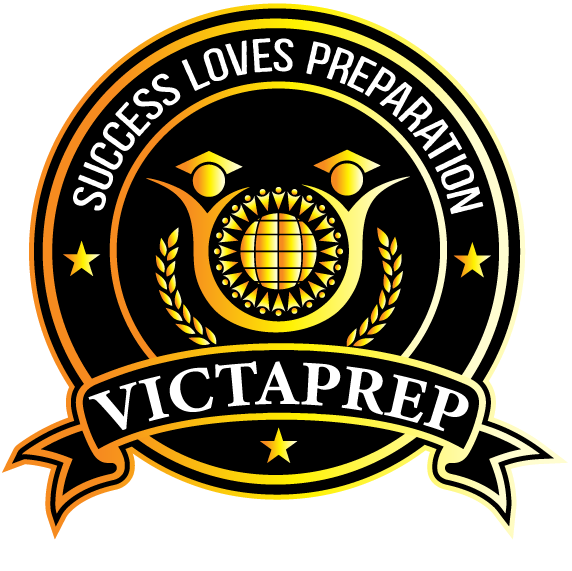What is WAT?
IIMs are one of the finest institutions which many people aspire to crack. To get into IIMs, scoring high percentile is not sufficient, there are other rounds in which one really need s to prepare for. One of them is the Writing Ability Test (WAT). In this article, we will be discussing tips for WAT-PI for IIMs which you need to keep in mind while going for the Personal Interview round
Weightage to WAT in Final Selection
During the past few years weightage to WAT in IIMs has increased. All the highly ranked IIMs like IIM Ahmedabad, Calcutta, Bangalore, Lucknow, and other top MBA colleges in India now ask for WAT’s
WAT Preparation
5 points to bear in mind while preparing for WAT.
- Key
- Description
- Lose the Jargons
Many of you might have corporate experience and with each organisation comes a different set of terminologies which you generally use. But remember the person assessing your writing skills might not be familiar with all those terminologies. You should certainly describe various aspects of your life-your leadership skills, your career journey, and your achievements but do so in such a language that is understandable to your reader. And in case you are a fresher, opt for the common language
- Catchy and relatable
The person assessing your writing skills must be reading of hundreds of essays, and if he gets to read the similar kind of content which everyone has already written, he/she will lose interest. Start off with something which intrigues an interest in the reader’s mind and keeps it that way.
- No circumlocution; be concise
Speak to the point. Try to use short sentences to create more impact because they are direct and to the point. Try to avoid unnecessary phrases.
- Structure, structure & structure
Please use the first few minutes to decide clearly what you would like to write on. Structure them well in short concise sentences, with clear linkages.
- Revise
The last step is to revise once whatever you have written. Have a thorough revision and check where the improvement is required and do the needful.
The 5 step Plan to attempt WAT:
The key factors to plan when attempting WAT:
The objective: One needs to write a structured essay that demonstrates clarity of thought, the simplicity of expression, comprehensiveness of perspective, and robustness of reasoning.
The resources: This is a bit tricky as one has no access to any reference material. If the topic is open to interpretation and offers the writer the freedom to choose a framework for discussion, the task is somewhat easier. However, if it is a specific topic (such as ‘The Demonetisation in India’) then one must primarily rely on our a priori knowledge of the topic. For this reason, it is imperative that all WAT takers keep themselves updated on current affairs.
The time available: Irrespective of how much time is available, one must divide it appropriately among the necessary steps, instead of devoting all of it to the act of writing. For the sake of understanding the process let us imagine that we have 20 minutes on hand.
Step 1: Understand the Topic (In approximately 3 minutes)
The first step in understanding the topic is to define the keywords of the topic. The word ‘keyword’ implies that a sufficiently comprehensive definition of that word will ‘unlock’ the topic for us. Any relevant discussion is impossible unless the definitions for the keywords exist.
Many WAT takers tend to begin their essays with something funny which may have nothing to do with the topic. Some use famous quotations which, although memorable, make for a very predictable and therefore uninteresting beginning. Some even repeat the topic directly. Instead of resorting to such gimmicks, we could begin by simply defining the keywords of the topic, which gives the reader the first glimpse into our thought process.
Step 2: Choose a Side (In approximately 2 minutes)
Once you are in possession of your basic definitions, I recommend that you prepare a ‘T’ as follows:

Here we divide the 3 minutes into 2 parts. We first think of all the arguments, ideas, observations, and experiences in favor of one side, write them down on one side of the ‘T’, and then repeat the process for the other. If done impartially, this exercise will give us an all-around view of the topic issue. No matter what side we eventually favor, we shall use the data on both sides to present a comprehensive understanding of the topic, along with the reasons why we favor one side over the other. Once they are out, the clutter in our heads reduces, and we can think more clearly and confidently.
Step 3: Organize the Points (In about 2 minutes)
Go back to the T, and draw rectangles around your points as follows:

\The numbers next to rectangles represent the proposed order of your paragraphs. You may club the points together or separate them as you feel appropriate. The point is, we must plan the paragraphs before we begin to write to maintain the coherence of ideas. Otherwise, the essay may seem disjointed and leave the reader befuddled.
The concept of the rectangles can also be applied similarly to the bullet points you may have prepared for a descriptive essay.
Step 4: Write the essay (In approximately 11 minutes)
When you write the essay, stick to your plan. You may improvise the contents of the paragraphs, but it takes considerable experience in writing to be able to significantly alter the plan. Unless you have such experience, avoid deviating from the plan.
Also, avoid the temptation of ‘saving’ the time on steps 1, 2, and 3 to increase the writing time. If we do not know what to write, we will end up wasting whatever time we give ourselves.
In the next post, we shall look at step 4 in greater details.
Step 5: Proofread the Essay (In about 2 minutes)
Leave a minute for checking your essay for the following issues: spelling mistake, punctuation errors, and vocabulary changes.
DO NOT use this time to make major structural changes to the essay, as you will simply not be able to complete the task within the time limit, which will reflect poorly on your time management. You may even end up spoiling a good essay.
Does this plan look simple? Maybe on paper. You must, however, practice it religiously prior to writing the WAT. Like all processes that the mind tries to learn, this plan must be practiced so often that it becomes a reflex response to the task. All the very best for your attempt!
Some real life experiences of WAT topics:
1. The essay was on a Digital India campaign and was supposed to be written in half an hour. After a long wait (almost 3 hours), a panelist came and escorted me inside a room where two others were also there. So total three.
I think one was an alum, one AdCom and another professor.
2. As they say, IIM’s are totally different when it comes to the interview. I experienced that firsthand during this EPGP Interview at IIMB. Surprisingly they did not ask me the routine questions of why MBA, why Now & why IIMB. They wanted to grill me on electrical engineering & on my interests.
We were given a prompt” Famous Physicist Stephen Hawking says that if human species is to survive, we must leave this planet & find habitat on another planet before the next 100 years.”
We were asked to write our views on this prediction & were given 30 minutes time. 10 minutes to organise thoughts & 20 minutes to write about them.”
3. We were given the WAT topic. The topic was on recent rule of government to mandate 2% allocation of profits of companies to CSR– is the new rule correct or is the earlier approach of voluntarily carrying out CSR activities better? We were given 10 minutes to structure our answer on rough sheet and another 20 minutes to write our opinion with reasons.
If you think you need help in this journey, visit our website at https://www.victaprep.com/ or reach out to us at [email protected]! VictaPrep is an education consulting firm and our motto is guiding applicants with personalized solutions. It is a team of professionals, who come from a humble background, and yet have successfully taken the same journey as you aspire today!

